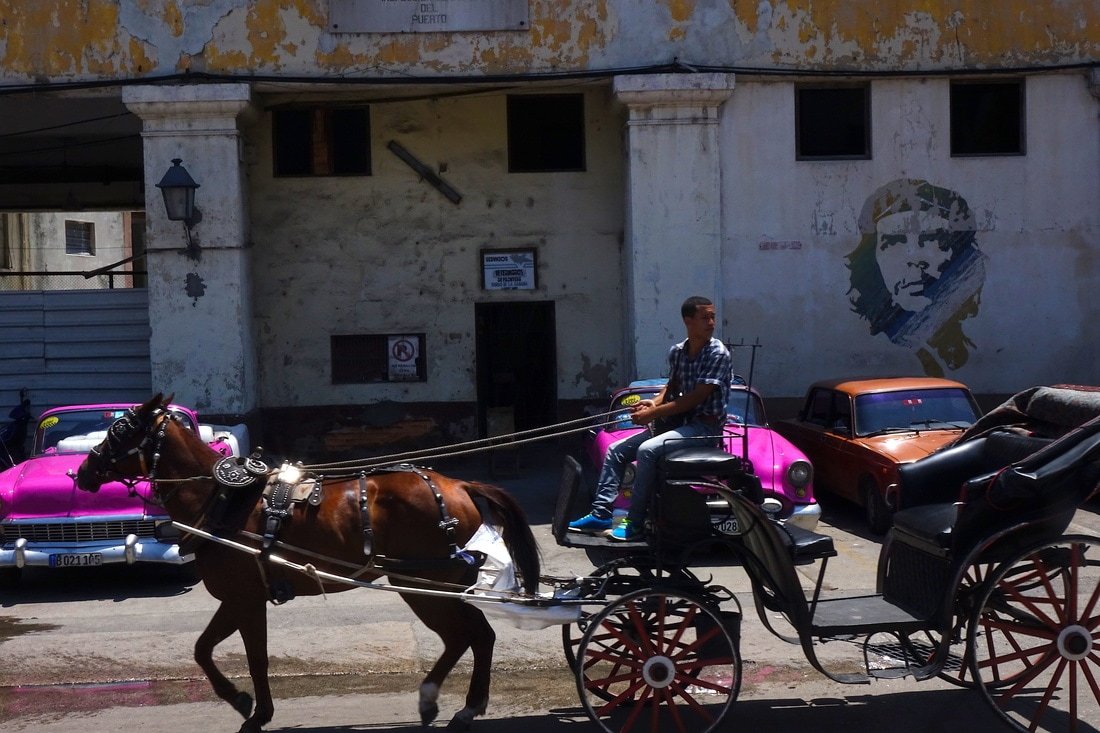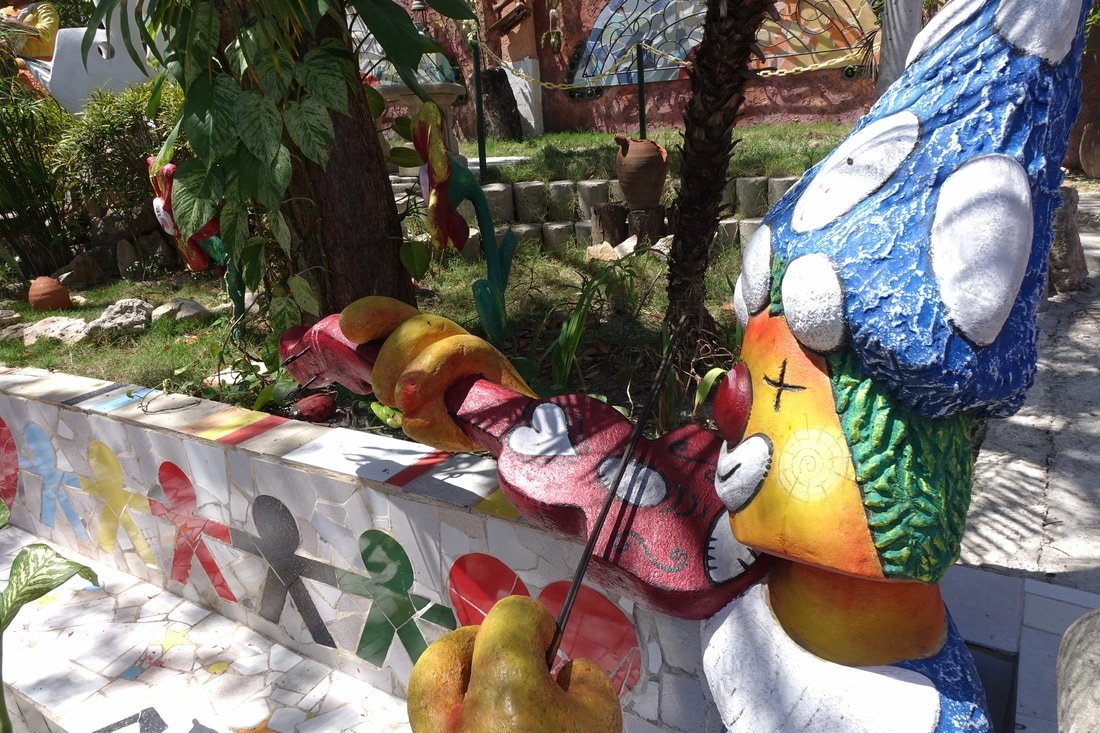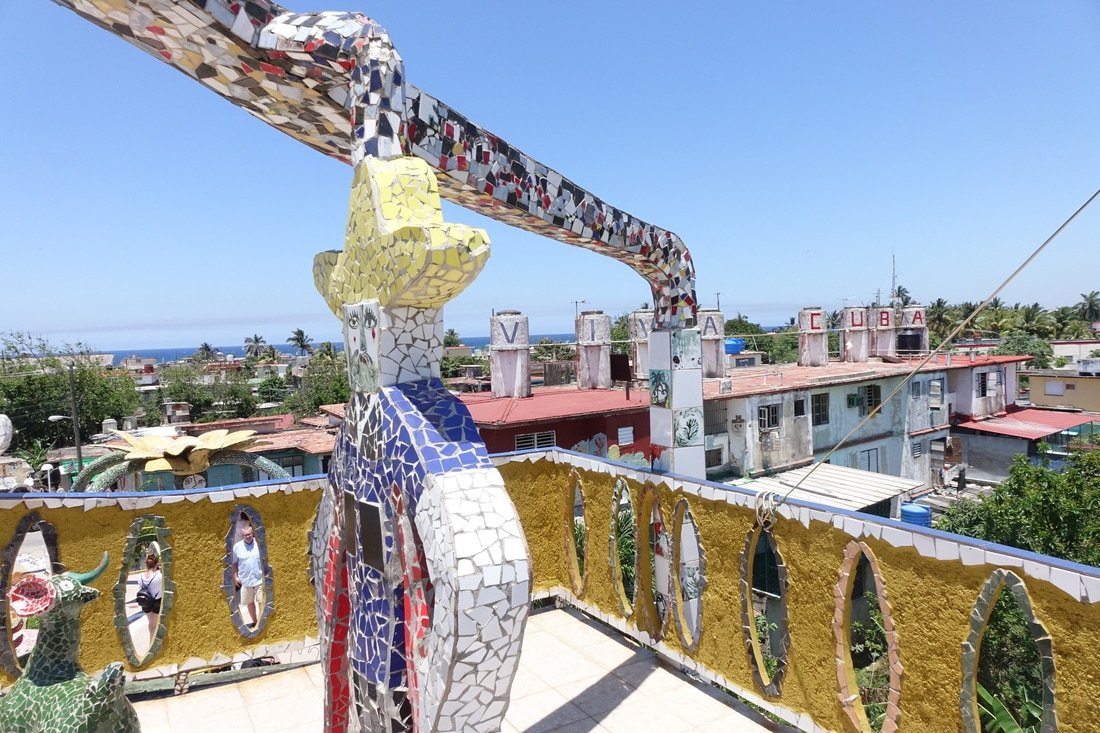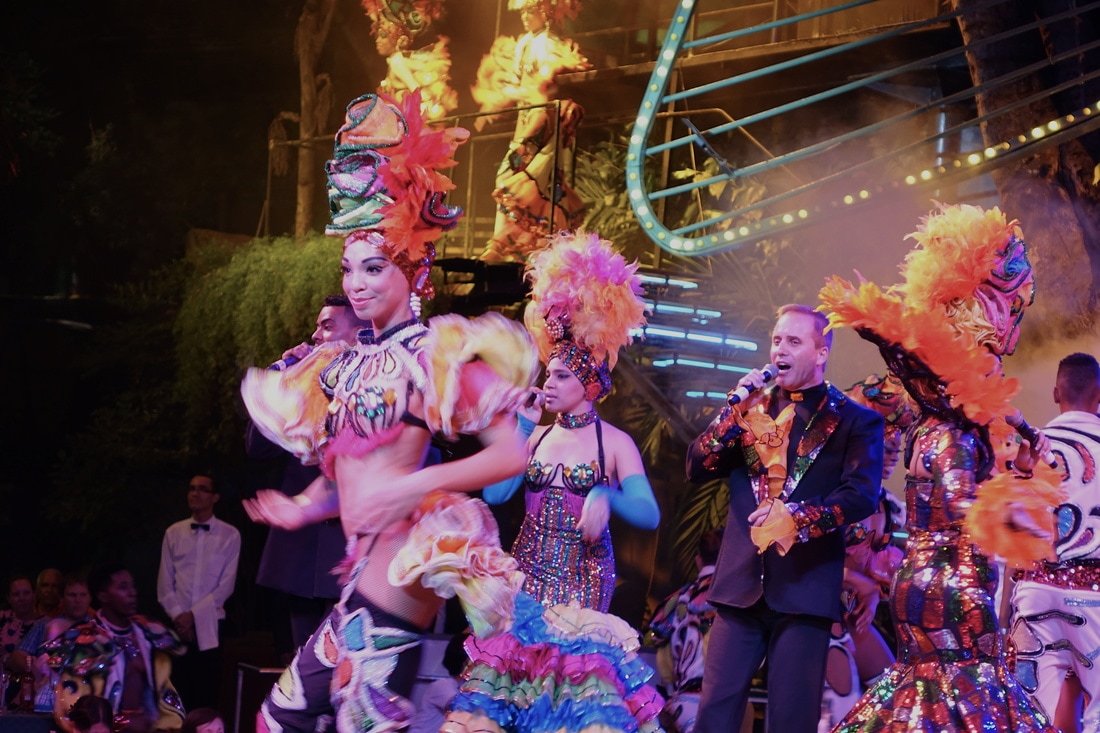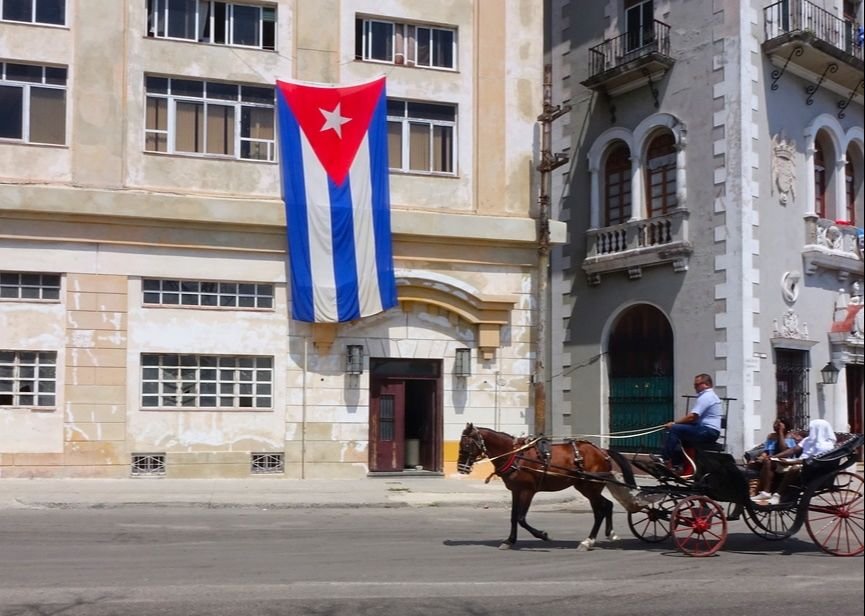5 Reasons You’ll Love a Cruise to Cuba
Sailing into the Havana harbor is a highlight of a cruise to Cuba,
The smell of sweet aromatic cigars wafted in the gentle warm night air as we watched the twirl of costumed dancers and singers come at us — wave after wave for more than two hours. We found ourselves amid an orgy of oranges, golds, purples, greens and yellows. Feathers and chandelier headdresses. Tantalizing twirling tassels and too-tight thongs.
I poured myself another rum and coke and turned to Colleen. She was already smiling back and giving me a dreamy nod. This was our night at the Tropicana. Crackling energy filled the large open-air arena. The constant applause for the performance and the swaying of people moving in their seats let us know that we had truly arrived in Cuba.
Cruise lines are racing to add ships and more itineraries in Cuba, the Caribbean's largest island, which has been opened to ships sailing from the U.S. for just over a year. I sailed on Norwegian Sky's inaugural voyage to Cuba. The ship makes weekly stops for two days and one night in Havana before taking passengers for a day at Norwegian Cruise Line's Great Stirrup Cay, a private beach resort in the Bahamas.
My first visit to Cuba came on a cruise on Norwegian Sky.
On my first trip to Cuba, I was able to explore Havana on foot, in a classic car and during an arts tour arranged through a ship excursion. Plus, that amazing night at the Tropicana, one of the most legendary and historic entertainment venues, which recalls the golden era of cabaret music and dancing entertainment. The club dates to 1939 and has seen performances by Paul Robeson, Xavier Cugat, Liberace, Carmen Miranda and Nat King Cole as well of generations of conga players and sequined showgirls.
Upon sailing into Havana harbor, I felt as if I was approaching any other Caribbean island nation. Like everyone else, I had heard so much about Cuba over the decades during which Americans essentially were banned from visiting as tourists. I knew of the politics and embargo and general animus the governments of the U.S. and Cuba shared for one another.
But Cuba looked and felt welcoming to me as I looked over the city skyline at sunrise. Crumbling building facades and the 1950s colorful classic cars came into view as another morning got underway in Havana.
I always aim to put politics aside when traveling. I want to meet the real people of a place, and the Cubans who I chatted with in the streets and at the bars during my time in Havana were so friendly and helpful. We stepped off the ship with no set plans for the day. Colleen, JD (a fellow travel journalist) and I decided to wander together on our first morning in Cuba, to see what kind of trouble we could get into.
I'll tell you about our two days in the city and some of the best tips and tricks for visiting Havana that I think will help you when you go. (Also, check out a video of our trip at the end of this post.) Norwegian Sky pulls into a spot at the pier in the heart of the city, and we crossed a main street to find a town square.
The City Is Walkable
We arrived on the biggest cruise ship to visit the island in decades, and the city was abuzz in the early morning. The sun was already hot, too, as we started to stroll. Guitarists approached serenading the new visitors. Hawkers whisper from every nearby street corner: "Do you want to buy cigars?"
We walked on, much too early to make a commitment one way or another, for cigars, classic car rides or anything else during our first moments in Cuba. Instead, we would stroll, down this alley, then that, boring deeper into the heart of the city, into neighborhoods farther away from port. We saw people carrying on their shopping, construction workers already dusty and sweating as they tried to shore up a crumbling wall — and other visitors pointing their cameras in all directions, just like we were.
Havana is extremely walkable. If you are staying for more than one day, it's worth the time to take a morning and just meander through the city. We walked about six miles and found pharmacy museums, city parks, town squares, markets, numerous paladars (tiny eateries) and finally the perfect bar to get some relief from the sun and quench our thirst after a thrilling day exploring.
Dos Hermanos is just across from the main cruise pier, and we stumbled in to find empty seats at the bar. I ordered a Bucaneros beer, and JD and Colleen sipped from the most mint-leaf and rum-filled mojito glass I've ever seen. Colleen said she couldn't believe how strong they had poured her drink. It was cold, refreshing -- and powerful.
The Sail-In to Port Is a Highlight
When you arrive to Havana on Norwegian Sky, make sure you rise early enough to get a good spot on the rail for your approach into the harbor. It's a stunning sight at sunrise as the city grows closer and closer. If you want to take pictures and video, go to the front of the ship on Deck 11, passing through the Outrigger Lounge to the deck outside. If you want to just chill out and soak in the scenery, try an early-morning dip in the hot tub in the front on Deck 12.
Beautiful Cuban Art Tells a Story
The Muraleando art collective in Havana, Cuba.
Norwegian Sky offers several excursions to help you become acquainted with Havana. We took the "Art of Cuba: Yesterday, Today and Tomorrow" tour that made a stop at the National Museum of Fine Arts before visiting two thoroughly unique and fascinating neighborhoods that have grown into standout tourist stops because of their commitment to a distinct brand of artistry. At the museum, we learned about the top painters, sculptors and other art figures who made their marks with works that depict Cuban life over the past centuries, daring to create commentaries on everything from slavery to recent decades of government oppression.
Then it was on to see Muraleando and Fusterlandia. These two communities built themselves up as attractions through the collective hard work and vision of the people who live there. Muraleando sits atop a site that had been nothing more than trash, and community members 15 years ago began holding art classes in the streets and murals began to pop up using the neighborhood as a canvas for works highlighting fun and fanciful depictions of Cuban life.
The mosaic wonderland of Fusterlandia.
Later, community leaders petitioned the government to let them design a resident art project that transformed the garbage into recycled art pieces. Now murals, mosaics and sculpture fill the blocks of the small community, and the art continues to spread throughout the collective, which hosts events such as birthday parties and quinceaneras for its residents at no cost.
Tourists are greeted by song and dance (you will be dragged onto the dance floor to participate) by the artists who are proud to share their story and spirit with visitors.
At Fusterlandia, we were transported into a world fitting of a Doctor Seuss book. A street is filled with homes that have been adorned by seemingly millions of ceramic tiles to create hundreds of pieces that glimmer in the sun and make your jaw drop as you wander to explore every surface and sculpture. The art project started at the home of artist Jose Fuster, who was subsequently asked by neighbors whether he would "do something for their homes," too. What started more than 30 years ago with just Fuster's studio has spread to more than 50 homes. Fuster does not charge his neighbors for the work and has to make trips out of the country to secure much of the ceramic material to use in the project.
The Bustling Night Life
We capped off one busy day in Havana with a thrilling show at the Tropicana Club.
We visited the famous Tropicana Club for a rousing show that featured a blitz of dancers and singers performing nonstop over two hours. Buena Vista Social Club is another recommended place. This night spot provides a less-touristy and more authentic experience (less expensive, too) than the Tropicana, according to a friendly teacher we bumped into on the street during our strolling.
Also, make sure you get a car tour — preferably around sunset — in a classic Cuban car taxi. We loved sitting in the spacious back seat of our 1952 Chevy Deluxe, watching Havana transform from day to night as we rolled through the city.
U.S. Dollars and Euros Work
They didn’t let me drive, but I had a great ride and tour of Havana in this 1952 Chevy Deluxe.
We were able to use U.S. dollars and Euros easily at the places we visited. This is becoming more the norm we have heard. Some of our fellow passengers had been to Havana just months before our visit and said they were not able to use these currencies. Things are changing quickly. We have even heard that people were able to use credit cards at some businesses. This is good to hear because many visitors have faced the hassle of standing in long lines to exchange their money to Cuban pesos (the tourist money CUC), which can be a frustrating waste of time.
When you use U.S. money or euros or British pounds, though, you are likely to not get the most favorable exchange rates as most vendors do a little rounding in their favor. But we had good experiences with businesses that came close enough, and the convenience factor was huge. You also will get your change back in pesos, though, and any CUC you have at the end of your visit will be heading back home with you as a souvenir or can be used the next time you travel to Cuba.
Expect to be approached by a person who might ask whether you are interested in cigars or rum. They likely will start a pitch about how the "cooperative" is having a half-price sale on such items — Today Only! You'll also learn that "when you buy from the cooperative, this helps Cuban people get food vouchers." This "cooperative" is really a private business out of sight of the government, and the hawker might ask to show you where it is and lead you to a room in a private residence where they indeed might have really good deals on cigars. But you should know what is really happening so you can decide whether to go make a purchase.
Note: The cigars we saw in these cooperatives can be about $5 each compared with about $10 or more at an official store you can find along the waterfront or other areas in the city.
Thanks for reading,
JR



